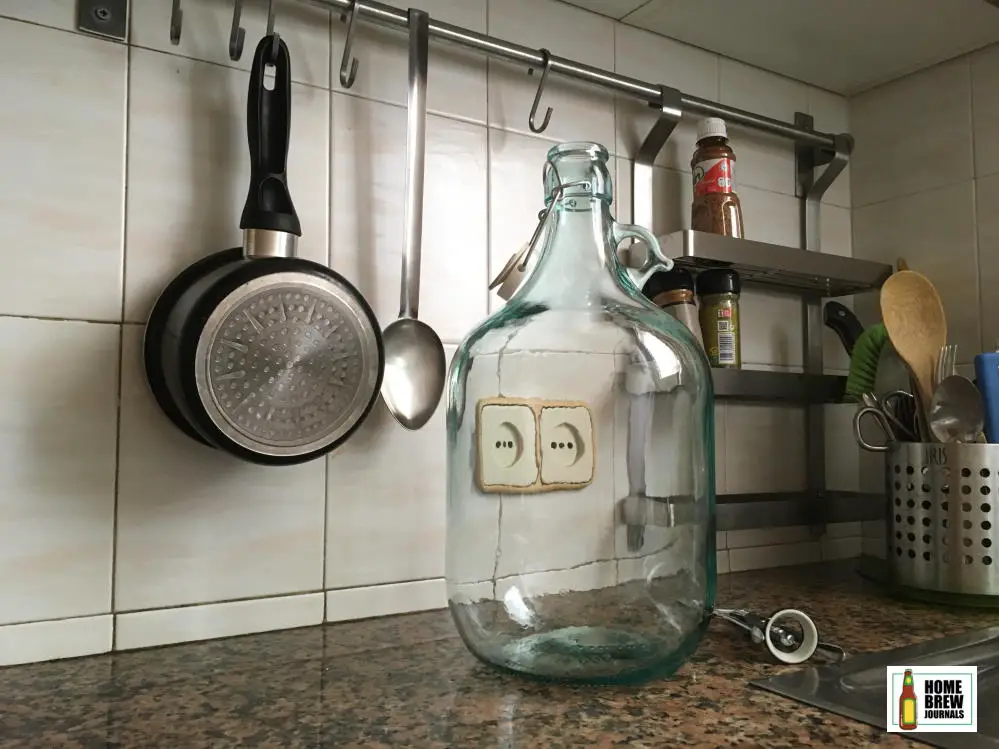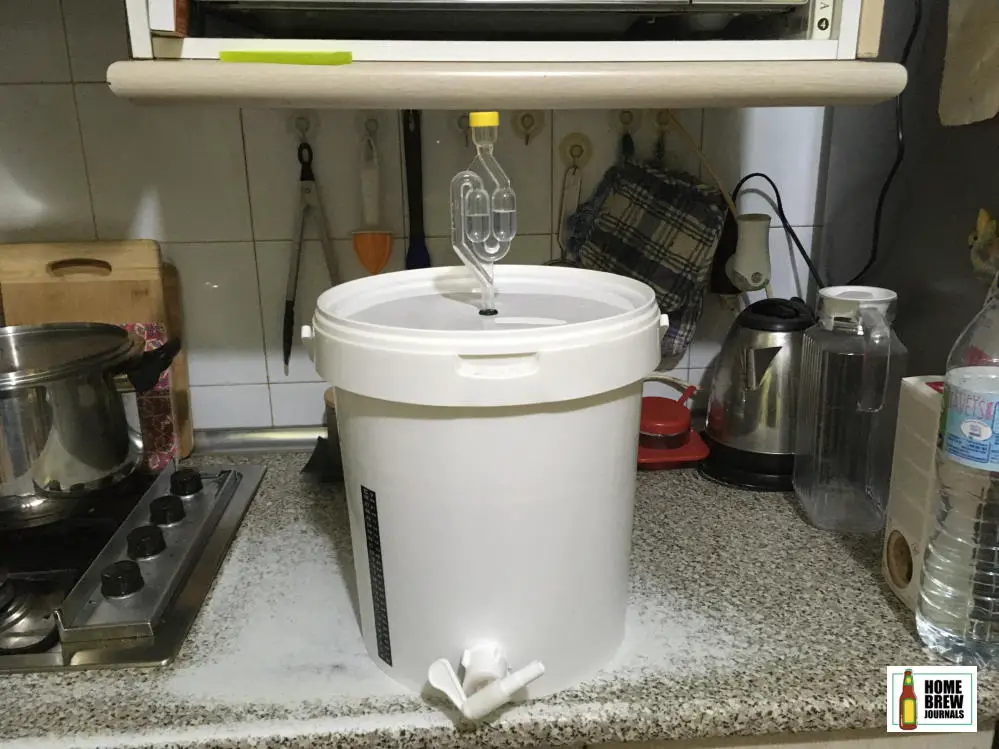Fermenters come in a wide range of shapes and sizes to fit all budgets and home brewing needs. In this article, we compare the different sizes and styles of fermenters and discuss the pros and cons of each type.
The first thing that you need to consider when purchasing a fermenter is size. During the fermentation process, a thick layer of foam called krausen develops on top of the wort. If your fermenter is too small, the foam will expand out through the airlock, possibly blocking it causing a blowout.
Your fermenter should be at least twenty per cent larger than the quantity of beer you plan to brew. For example, for a 20 litre (five gallon) batch of beer, you need a fermenter with a capacity of at least 24 litres (6 gallons).
Once you have determined what size fermenter you need, you can then decide which style and material are most suitable. Each type of fermenter has its own set of advantages and disadvantages but at the end of the day, your decision will largely be down to budget and personal preferences.

What size primary fermenter do I need?
During the early stages of fermentation, a thick layer of foam called krausen develops on top of the wort. The krausen helps protect the fermenting wort against infection and is a good indicator of how things are progressing. As fermentation comes to an end, the amount of krausen slowly reduces.
If you were to fill your fermentation vessel with wort, the krausen would have nowhere to go and would be forced out through the airlock which might become blocked. The pressure would then build up in the fermenter until the airlock was blown out.
To stop this happening, you should choose a fermenter which is 20% larger than the volume of beer which you will brew. This leaves an empty space at the top of the fermenter called headspace.
Most homebrew recipes are designed to make 5-gallon batches of beer and require a six-gallon or six and a half gallon fermenter.
What size secondary fermenter do I need?
Once fermentation is complete, you can either bottle or keg your beer or transfer it to a second vessel to age. Strictly speaking, the secondary fermenter is a misnomer because little to no fermentation takes place. Additional hops, spices and other ingredients may also be added at this stage.
Unlike the primary fermenter, which needs extra headspace to allow for the formation of krausen. The secondary fermenter should be as full as possible. This minimises the amount of air contact and reduces the chance of the beer becoming oxidised and developing unwanted off flavours.
For a 5 gallon batch, you’ll need a five-gallon secondary fermenter.
Plastic buckets and tubs
Many homebrewers, myself included, use food-grade plastic buckets as fermenters. Plastic buckets are cheap, lightweight, easy to store and can be purchased complete with airlock and a spigot which can be used for bottling the finished beer.
Fermentation buckets are available in a wide range of sizes from 5 litres (1 gallon) to 30 litres (8 gallons). Alternatively, you can purchase a food-grade container and add the airlock and tap yourself. This can work out cheaper than purchasing a purpose-made fermenter, especially if you know some who works in the food industry.
If you decide to make your own fermenter, make sure it’s made of white food grade plastic which won’t taint your beer.
Plastic buckets are lightweight and usually have a built-in handle which makes them easy to move. This is ideal if you brew in the kitchen and ferment is a spare room or the basement. For storage, they can be stacked one inside the other. If you live in an apartment with limited storage space, you can store the rest of your homebrew equipment inside the fermenting bucket when not in use.
Another advantage of using a bucket is that it’s easy to transfer the wort from the kettle to the fermenter. Likewise, the plastic spigot makes it easy to rack to a secondary fermenter for ageing or for bottling directly from the fermenter.
Once the wort has cooled to pitching temperature, it’s essential that you aerate the wort before adding the yeast. When using a plastic bucket, the easiest way to do this is by vigorously string the wort with a large spoon or paddle.
The wide diameter lid also means that plastic buckets are easy to clean. Having said that, you should take care since the soft plastic can easily get scratched. A badly scratched bucket can be impossible to sanitize effectively since bacteria can hide in the scratches.

The other disadvantage of plastic buckets is that the lids don’t always seal effectively, meaning that oxygen can get in. This may not be a problem during the active fermentation phase when the bucket fills up with CO2 and the wort is covered by a layer of krausen but it is a consideration for secondary fermenters.
Another thing to bear in mind if you will be ageing your beer in the fermenter is that plastic is permeable to oxygen. Over time, plastic can also absorb flavours which may taint subsequent batches.
Glass carboys, demijohns and jugs
Glass carboys and demijohns have long been the first choice for home brewing and winemaking.
Carboys come in three, five, six and six and a half-gallon sizes (11, 19, 23 and 25 litres). A 6.5-gallon fermenter and 5-litre conditioning vessel are an ideal combination, and probably explain why so many homebrew recipes make five-gallon batches.
Glass jugs and demijohns are available in a wider range of sizes, from half-gallon (three-litre) jars up to 15 gallon (54 litres) demijohns.
Glass is hardwearing and doesn’t scratch. It is also 100% impermeable to oxygen and doesn’t absorb flavours or smells.
Unlike buckets, demijohns and carboys are comparatively heavy and are hard to store since they can’t be stacked. They also don’t usually have taps, which means that you have to transfer your beer using a siphon or racking cane. Most homebrewers who ferment in glass carboys either use a plastic bucket with a spigot for bottling or keg their finished beer.
Glass is transparent which is both an advantage and a disadvantage. On the plus side, it allows you to see how fermentation is progressing without having to remove the lid. On the downside, you must store them in a dark place or keep them covered to prevent light from causing off flavours.
The small opening of the carboy also makes it impossible to get your hands inside for cleaning and, for small batches, make it slightly harder to transfer your wort from the kettle to the fermenter. Having said that, some manufacturers also offer largemouth carboys and demijohns.
The main disadvantage of glass is that it is fragile. Carboys are susceptible to breaking if they are handled carelessly. Although unlikely, there is also a risk that glass carboys can explode if they become pressurised due to a blocked airlock.
PET Carboys
PET (Polyethylene Terephthalate) is a type of transparent food-grade plastic which is less porous than other plastics typically used for fermenters. PET carboys combine some of the advantages of plastic with most of the advantages of traditional glass carboys.
Stainless steel fermenters
Stainless steel fermenters have all the advantages of plastic fermenting bins plus they don’t scratch, are impermeable and are very easy to clean. The only downside is cost, stainless steel fermenters are typically around eight times more expensive than their plastic counterparts.
If you have the budget, stainless steel fermenting buckets sold at homebrew suppliers come in three, five, seven and fourteen gallons (11, 19, 26 and 52 litres) sizes.
Conical fermenters
If you’ve ever visited a commercial brewery, you’ll have seen that fermentation takes place in tall stainless steel vats which taper towards the base.
Conical fermenters allow brewers to remove the trub from the beer without having to rack it off into a second vessel. This means that both primary and secondary fermentation can take place in the same vat without exposing the beer to the risk of contamination.
Conical fermenters also make it easy to harvest the yeast which you can then wash and re-use.
Smaller conical fermenters are available for homebrewers. The best-known models include the Fermentasaurus, Fastferment and the Chronicle by SS Brewtech all of which are suitable for brewing five-gallon batches.
